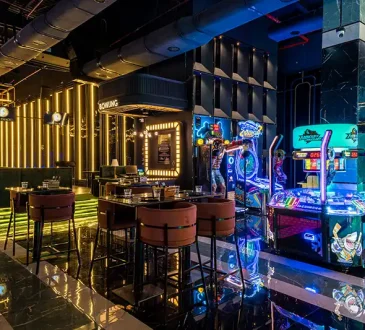
The LED lighting landscape has grown rapidly, shaping how spaces are lit from homes and offices to large-scale signage. While LED technology offers energy savings and long-term performance, choosing the right partner to supply or manufacture the components can significantly impact a project’s outcome.
This becomes especially critical when sourcing components like LED strip lights and LED modules, where small differences in quality or design can lead to major differences in performance.
Understanding the Basics: Strip Lights vs. Modules
LED strip lights are known for their flexibility and aesthetic versatility. Whether it’s under-cabinet lighting, architectural features, or accent lighting, strip lights offer consistent brightness in a slim format. Available in various voltages, densities, and waterproof ratings, they’re often the go-to for custom-fit applications.
LED modules, in contrast, are robust lighting components typically used in signage, channel letters, or backlit displays. These modules usually have a protective casing, consistent light output, and a waterproof design making them ideal for outdoor and high-visibility projects.
What to Look for in an LED Strip Lights Supplier
Once you know the type of strip you need be it SMD, COB, or neon flex the next step is finding a supplier who can deliver consistent quality. The right led strip lights supplier offers more than just a product list. They provide detailed technical specs, multiple product variations, and flexible ordering options.
In addition to having a wide range of color temperatures and LED densities, the supplier should also follow recognized quality standards, like ISO 9001 or CE/RoHS certifications. These reflect a commitment to safety, consistency, and compliance with industry norms.
Another important factor is whether they allow customization. For projects with unique length or brightness requirements, a supplier who can accommodate low minimum order quantities and custom orders can make the difference between a quick install and costly delays.
Key Traits of a Trustworthy LED Module Manufacturer
Just as with strip lights, the quality of your signage or backlit display depends heavily on the modules used. A good led module manufacturer pays close attention to the build quality, beam angle, and waterproofing of each unit.
Modules should have clear ratings for brightness, power consumption, and IP protection especially for outdoor use. Look for those with IP67 or IP68 ratings for maximum durability. Also, well-designed optical lenses or light diffusers help reduce shadows or uneven spots in channel letters and display panels.
You’ll also want to evaluate the installation convenience. Pre-soldered wires, 3M adhesive backings, or integrated mounting holes can save a significant amount of time during setup, especially in high-volume rollouts.
Matching the Product to the Application
Choosing between strips and modules often comes down to project needs.
- For indoor, ambient, or decorative lighting, strip lights provide flexibility, sleekness, and visual continuity. Look for high CRI (Color Rendering Index) options if accurate color representation is important like in retail displays or design studios.
- For outdoor signage, letter lighting, or any application that requires punchy, weather-resistant lighting, LED modules are a safer bet. Their concentrated brightness and protective casings make them better suited for demanding environments.
Each solution has its strengths choosing one over the other should be based on the specific lighting effect, environmental conditions, and space constraints.
How to Ensure Quality Before You Commit
Before placing a bulk order or starting an installation, take time to validate the product’s performance and reliability.
- Check datasheets: Reliable suppliers and manufacturers will always have detailed specs available. These documents help you confirm everything from voltage and current draw to beam angle and lifespan.
- Ask about quality control: Find out how products are tested. Are there burn-in tests, temperature resistance tests, or waterproof evaluations? These steps ensure products perform well over time.
- Look into third-party certifications: CE, FCC, and RoHS marks are not just formalities they show the product meets electrical safety and environmental standards.
- Request samples: A physical sample can help you evaluate brightness, color consistency, build quality, and installation compatibility before committing to a large order.
Final Thoughts
Whether your goal is to light up a modern interior or to install signage that grabs attention even in poor weather, the hardware you use matters. Selecting a reliable partner whether a led strip lights supplier or a led module manufacturer is about understanding your project’s technical needs and matching them with proven capabilities.
In an industry where quality differences can sometimes be subtle but impactful, taking the time to evaluate both the product and the people behind it will always pay off. A few extra questions and a closer look at the specs can save you from rework, returns, and frustration later on.




